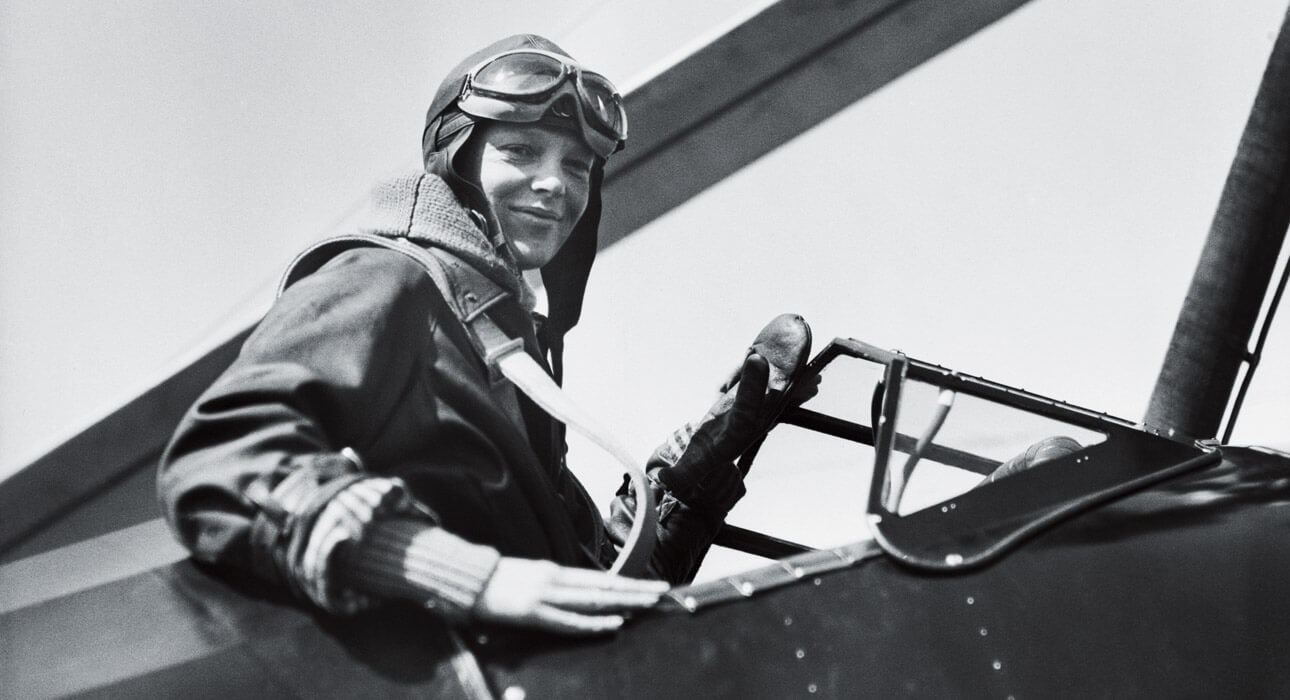
Picture taken after Earhart set an altitude record of 18,415 ft (5,613 m) in a Pitcairn-Cierva autogyro on 8th April 1931.
1897-1937
Flying solo thousands of miles across the Atlantic in a rattling airplane – without any modern navigation equipment – required courage, talent and a tough spirit. In the 1920s it was thought only men could achieve such exploits, before Amelia Earhart came along: she was tall and slim, with short, windswept hair, and a fearless mind. Born in 1897 in Atchison (Kansas), she dared to do the things women at the time simply did not do. In 1921, at the age of 24, she bought her first airplane. A year later she propelled the open two-seater with merely 60 horsepower up to 14,000 ft (4,267 m), setting the women’s altitude record.
In 1928 Amelia Earhart was the first woman to fly across the Atlantic, just one year after Charles Lindbergh’s record flight. Although the journey from Newfoundland (Canada) to Wales (UK) lasted 20 hours and was fraught with harsh weather conditions, Earhart was not proud of the achievement: “I was just baggage, like a sack of potatoes.” The aviatrix clearly preferred the pilot’s seat. In August 1928 she became the first woman to fly solo across North America and back. She wanted women to have equal access to traditionally male professions and to be able to make a living as pilots.
In 1928 Amelia Earhart was the first woman to fly across the Atlantic, just one year after Charles Lindbergh’s record flight. Although the journey from Newfoundland (Canada) to Wales (UK) lasted 20 hours and was fraught with harsh weather conditions, Earhart was not proud of the achievement: “I was just baggage, like a sack of potatoes.” The aviatrix clearly preferred the pilot’s seat. In August 1928 she became the first woman to fly solo across North America and back. She wanted women to have equal access to traditionally male professions and to be able to make a living as pilots.
In 1929 Earhart co-founded the Ninety Nines, a club bringing together 99 pioneering female aviators that is still running today, only with many more members. Courageous efforts like the altitude world record of 18,415 ft (5,613 m) in 1931 made her famous and a hero.
Earhart challenged traditional notions of femininity. Before she married publisher George P. Putnam in 1931, she wrote to him about her ideas of modern marriage: “I want you to understand I shall not hold you to any Medieval code of faithfulness to me nor shall I consider myself bound to you similarly.” She would not stop flying: “Please let us not interfere with the others’ work or play.”
On 20th May 1932, Earhart became the first woman to fly solo non-stop across the Atlantic. 14 hours and 56 minutes after taking off in Canada, battling strong winds, icy conditions and mechanical problems, she landed in Northern Ireland. On both of her Atlantic crossings, she was wearing a LONGINES chronograph. At the time, watches were the only navigation instrument available. “After midnight, the moon set, and I was alone with the stars”, she wrote. “The lure of flying is the lure of beauty, (…) the reason flyers fly is the aesthetic appeal of flying.”
Earhart challenged traditional notions of femininity. Before she married publisher George P. Putnam in 1931, she wrote to him about her ideas of modern marriage: “I want you to understand I shall not hold you to any Medieval code of faithfulness to me nor shall I consider myself bound to you similarly.” She would not stop flying: “Please let us not interfere with the others’ work or play.”
On 20th May 1932, Earhart became the first woman to fly solo non-stop across the Atlantic. 14 hours and 56 minutes after taking off in Canada, battling strong winds, icy conditions and mechanical problems, she landed in Northern Ireland. On both of her Atlantic crossings, she was wearing a LONGINES chronograph. At the time, watches were the only navigation instrument available. “After midnight, the moon set, and I was alone with the stars”, she wrote. “The lure of flying is the lure of beauty, (…) the reason flyers fly is the aesthetic appeal of flying.”
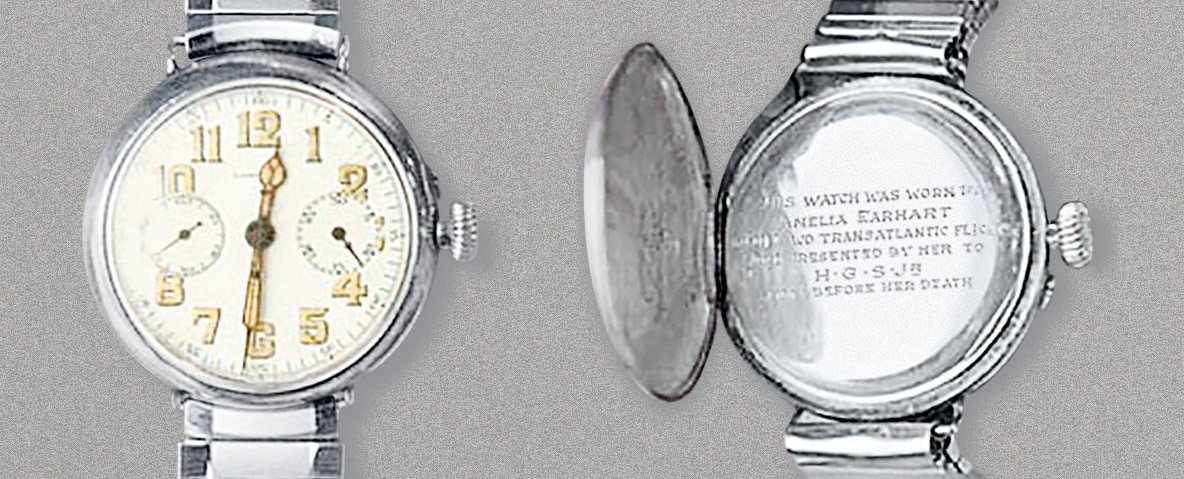
Front and back of Amelia Earhart’s LONGINES chronograph
This single-button chronograph featured two auxiliary dials and was driven by calibre 13.33Z. With a 35 mm case, this model was produced from 1913. The back of Earhart’s LONGINES is engraved: “This watch was worn by Amelia Earhart on her two transatlantic flights and presented by her to H.G.S. Jr. just before her death.” H.G.S. Jr. refers to Harry Gordon Selfridge Jr., owner of the famous London department store. Earhart met him after her solo-transatlantic flight in 1932. Selfridge gifted her a watch, and in return she gave him the LONGINES she wore during her Atlantic crossings in 1928 and 1932.
“I WAS ALONE WITH THE STARS”
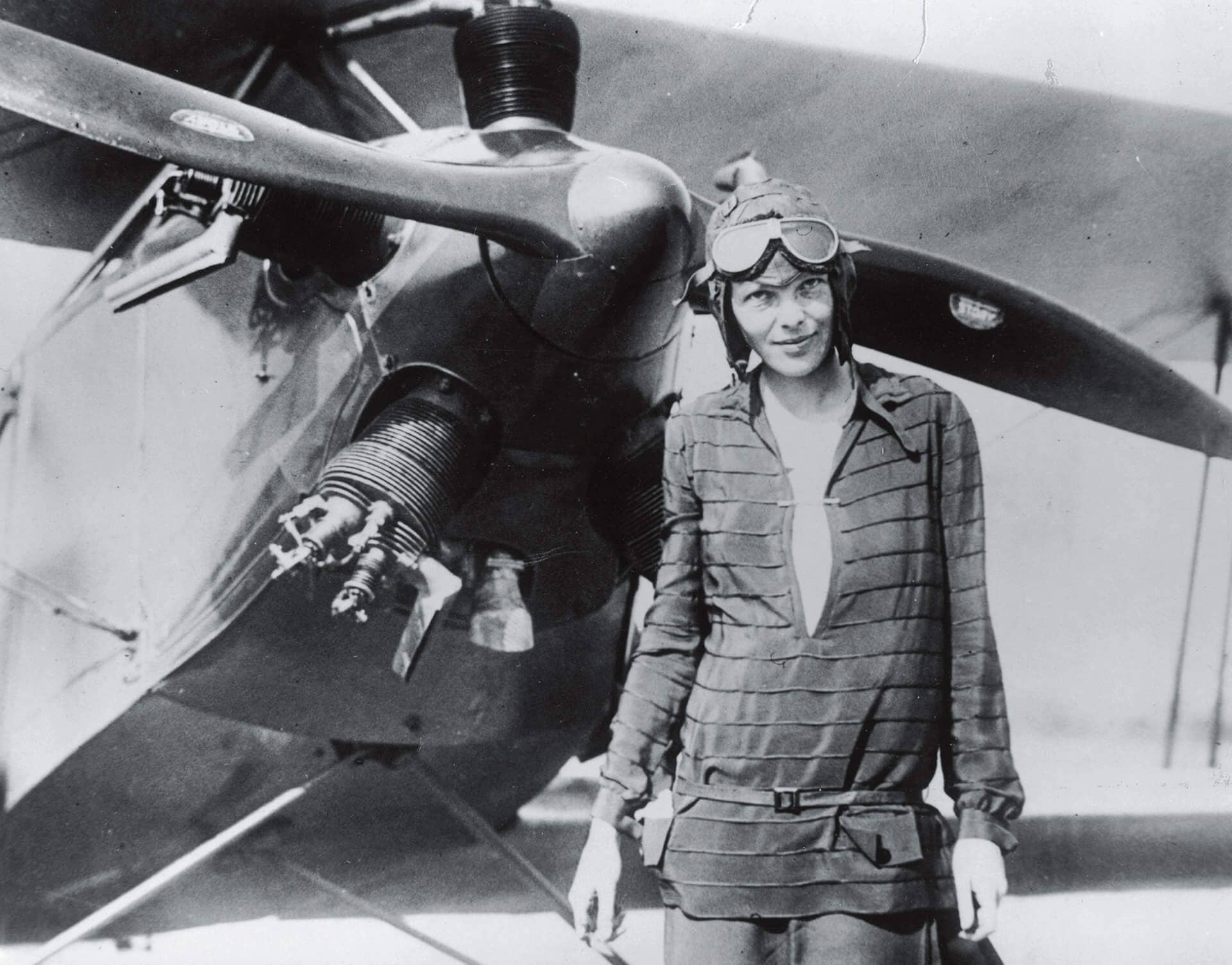
Amelia Earhart
standing in front
of her plane in Newfoundland
(Canada),
14th June 1928.
1922
22nd October: altitude world record for female pilots, 14,000 ft (4,267 m).
1928
17th-18th June: first woman to fly over the Atlantic, as a passenger, from Newfoundland (Canada) to Burry Port (UK), in 20 hrs 40 min.
24th August: first woman to fly solo across the North American continent and back.
1930
5th July: world speed record for women, at 181.2 mph (291.6 km/h).
1931
8th April: altitude record for autogyros (aircraft with freely rotating horizontal blades and a propeller) for men and women: 18,415 ft (5,613 m).
1932
21st May: first female aviator and the second person to fly solo non-stop across the Atlantic Ocean, from Newfoundland (Canada) to Northern Ireland, in 14 hrs 56 min.
1937
17th March: flight from Oakland, California to Honolulu, Hawaii in 15 hrs 47 min, setting a speed record for east-to-west flight.
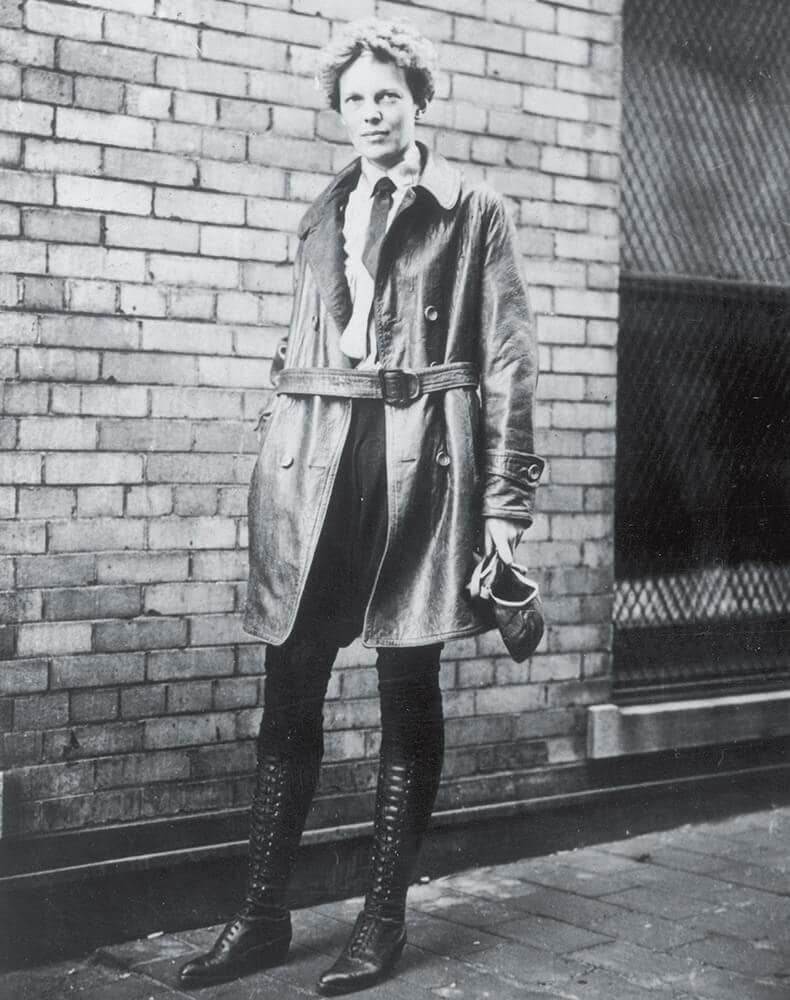
Amelia Earhart in her distinct style (1928). At the time, women were not supposed to wear trousers.
Flying around the globe near the equator, a 29,000-mile (47,000 km) trip, was meant to be Earhart’s final project. “Women, like men, should try to do the impossible”, she once said. Earhart and her navigator Fred Noonan set off from Miami, Florida, on 1st June 1937. After stopping in Latin America, Africa and Asia, on 29th June 1937, they reached Papua New Guinea. Three days later they took off for the last leg, with a planned stop at Howland, a tiny Pacific Island, halfway between Hawaii and Australia. After 19 hours in the air, Earhart reported to a US-ship near Howland by radio that they had “one-half hour fuel and no landfall”.
The last message they sent was that they were circling, but could not locate any ship. Shortly afterwards Earharts twin-engine Lockheed Electra and its crew vanished. The Navy went out to locate the pair, but no trace was ever found. Even the recent search expedition in August 2019 led by Robert Ballard, famed for locating the wreck of the Titanic, found no evidence of the vanished aviator’s plane.
Amelia Earhart had left her husband a letter with wise foresight: “Please know I am quite aware of the hazards. (…) Women must try to do things as men have tried. When they fail, their failure must be but a challenge to others.”
Amelia Earhart had left her husband a letter with wise foresight: “Please know I am quite aware of the hazards. (…) Women must try to do things as men have tried. When they fail, their failure must be but a challenge to others.”
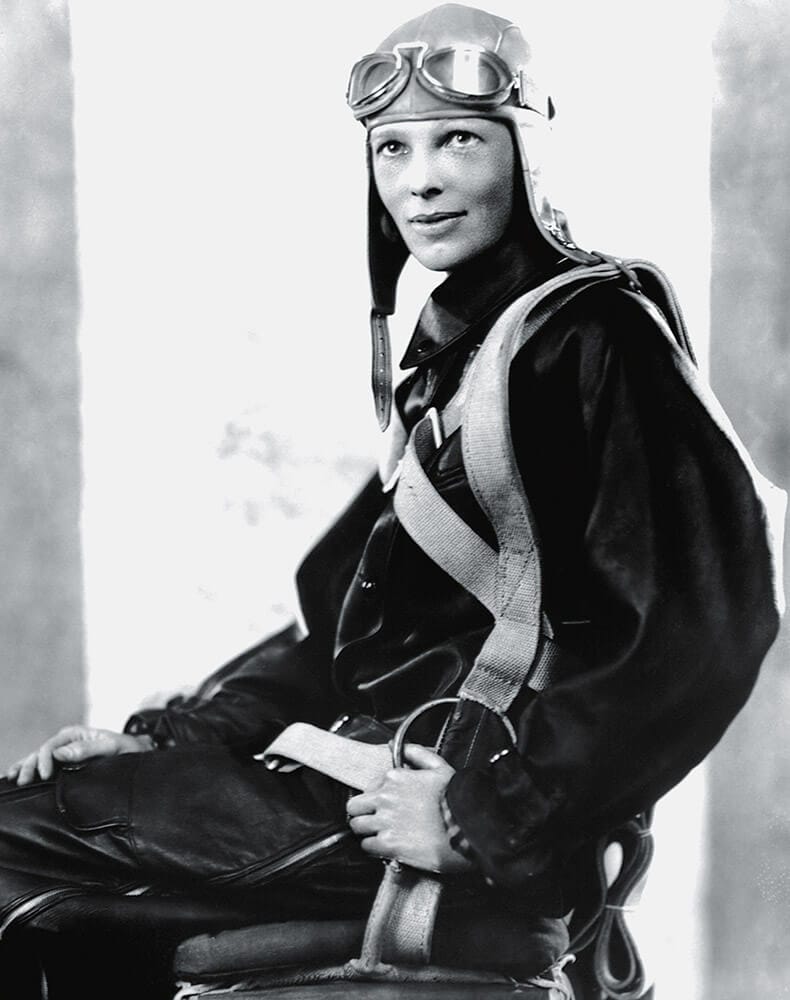
Amelia Earhart poses in her flight suit, 1st November 1928.

